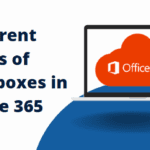In the evolving landscape of workplace management and security, the question of whether employers in Canada can monitor their employees through cameras is both pertinent and complex. This inquiry touches upon the delicate balance between ensuring security, safeguarding assets, and respecting individual privacy rights.
The legal framework in Canada provides clear guidelines and limitations on surveillance practices in the workplace, reflecting a nuanced approach to addressing these concerns.
Legal Foundations and Privacy Rights
At the heart of this discussion is the Personal Information Protection and Electronic Documents Act (PIPEDA), which sets the foundation for privacy rights in Canada. PIPEDA mandates that any collection, use, or disclosure of personal information by private sector organizations must be done lawfully and with explicit consent.
Under this act, video surveillance, which includes recording visual images of employees, is considered a collection of personal information. Therefore, employers must have a legitimate reason for conducting surveillance and must notify employees about the use of cameras in the workplace.
The Justification for Surveillance
Employers may argue that surveillance, including the deployment of bullet cameras, is essential for several reasons. These include the protection of property, prevention of theft, ensuring employee safety, and monitoring productivity.
However, the necessity to use surveillance equipment must be balanced with the employees’ expectation of privacy. Canadian courts have generally held that employees do have a right to a certain level of privacy in the workplace. This means that while employers can use cameras, they must do so in a manner that minimally intrudes on privacy and is justified by a legitimate business interest.
Implementation of Surveillance Practices
When implementing surveillance practices, including the use of Canadian security solutions, employers must adhere to several key principles to ensure they are compliant with Canadian law. First, the use of cameras should be as unobtrusive as possible and limited to areas where the need for security is the greatest and where the expectation of privacy is the lowest, such as entrances, exits, and areas containing valuable inventory. Sensitive areas such as washrooms or locker rooms are off-limits for surveillance cameras to protect employee privacy.
Moreover, employers are required to notify employees about the presence of cameras and the purpose of the surveillance. This notification should be clear, written, and accessible, ensuring employees are aware they may be recorded during their work hours. Transparency in the use of surveillance equipment fosters a culture of trust and can mitigate any concerns employees might have regarding their privacy.
Ethical Considerations and Best Practices
Beyond legal requirements, ethical considerations play a crucial role in the deployment of surveillance cameras in the workplace. Employers must weigh the benefits of surveillance against the potential impact on employee morale and trust. The use of surveillance equipment should be guided by the principle of proportionality, ensuring that the level of surveillance is appropriate to the risk or issue being addressed.
Best practices in implementing workplace surveillance include conducting a privacy impact assessment before installing cameras, establishing clear policies on the use of surveillance footage, and regularly reviewing the necessity and effectiveness of surveillance measures. By adopting a responsible and measured approach to surveillance, employers can enhance security while respecting the dignity and privacy of their employees.
Conclusion
The question of whether employers can watch you on camera in Canada is not a matter of a simple yes or no answer. It is framed within a legal and ethical context that seeks to balance the legitimate security needs of employers with the privacy rights of employees. While the use of surveillance cameras, including bullet cameras, is permitted, it is bounded by principles of legality, necessity, minimal intrusion, and transparency. Employers who navigate these considerations carefully can create a secure, respectful, and productive workplace that upholds both security and privacy.










